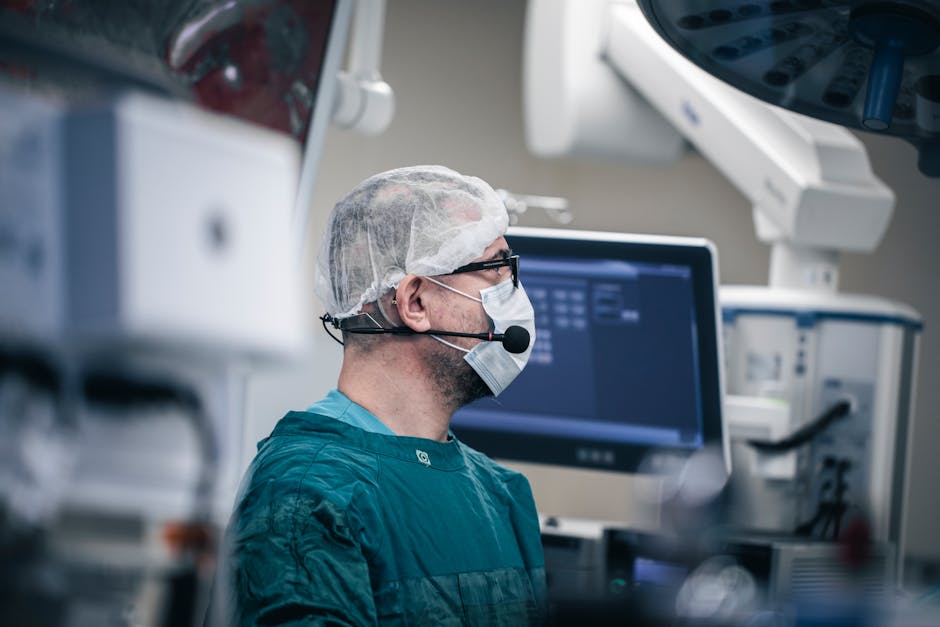 Photo from Pexels
Photo from Pexels
Originally Posted On: https://surgcomd.com/blog/what-is-a-direct-inguinal-hernia/
Did you know that about 27% of men experience an inguinal hernia at some point during their lives? It’s a common condition that falls into two categories: direct and indirect.
Men are the only ones that will ever experience a direct inguinal hernia. It’s more common in adults than children and comes with a long line of possible complications, such as strangulation and small bowel obstruction.
The good news is that there are treatment options available to help combat your hernia symptoms. You can schedule a robotic-assisted or open repair.
Check out this guide to learn more about what direct inguinal hernias are and what symptoms to look for.
What Is a Direct Inguinal Hernia?
As stated above, a direct inguinal hernia occurs only in men. It’s a condition that stems from the weakening of the abdominal muscle.
Over time, the muscle wall weakens to a point where the hernia is able to push through.
Causes of an Inguinal Hernia
There are many things that can weaken the wall of your abdominal muscle. Some include chronic coughing, strenuous labor, standing for long periods of time, and pressure from chronic obesity.
If you’ve had abdominal surgery due to medical problems, that will sometimes create a vulnerable spot where a hernia can form. In many cases, weakening will form naturally as you age.
What’s the Difference Between a Direct and Indirect Inguinal Hernia?
An indirect inguinal hernia is much more common than a direct one. It occurs when the hernia penetrates through the top of your inguinal canal.
Though it’s more common in men, women can also develop an indirect inguinal hernia. In most cases, this type of hernia starts at birth rather than occurring over time.
Is an Inguinal Hernia Serious?
Direct inguinal hernias aren’t serious most of the time. The only time they become deadly is when complications occur.
Conditions such as strangulation and enlargement can lead to painful swelling and even tissue death.
Strangulation
Strangulation occurs when a hernia has no blood supply to pull from. As time goes on, the tissue may become infected or die and turn into gangrene.
Gangrene is a serious medical issue that needs immediate attention. If the dead tissue isn’t removed quickly, you may need to have a limb amputated in order to save your life.
Enlargement
The pressure that a hernia puts on weakened tissue can cause a domino effect on other parts of your body.
For example, if you have an enlarged testicular hernia, it could move into the scrotum. This will lead to inflammation and swelling.
Small Bowel Obstruction
If a hernia blocks up your small intestine, you may find it difficult to use the restroom.
Warning signs that you’re experiencing a small bowel obstruction include nausea, vomiting, and intense abdominal pain.
Incarceration
If you have an incarcerated hernia, there’s no way to reduce it. As it grows, it will cause more pinching and discomfort.
Over time, it can lead to complications such as tissue death and internal bleeding. An incarcerated hernia can turn into strangulation, which as stated above, is a medical emergency.
Hernia Symptoms to Look Out For
When you have an inguinal hernia, you’ll notice a slight bulge around your groin. This bulge will become more pronounced when you strain yourself and seemingly disappear once you lay down.
When you exercise, you’ll most likely experience a large amount of pain in your groin. Some people go through periods of feeling weak.
After a while, the pain in your groin may become worse. The area will turn red, and you’ll develop a fever. Your heart rate could go up, and nausea and vomiting will follow.
Treatment Options
If your hernia is still too small for surgery, your only treatment option is to wait and see what happens.
For larger hernias, however, your doctor may suggest a robotic-assisted or open repair.
Robotic-Assisted Repair
With robotic-assisted repair, a surgeon will make a few small incisions that they can fit a scope and camera through. Using a console to control a pair of robotic arms, they’ll work through the scope to repair the hernia.
This surgical method is less invasive than open repair, which means the recovery time is shorter.
Open Repair
Open repair involves making incisions along the groin. The surgeon will reach in and manually put the hernia back into place and close the area with stitches.
Often, the surgeon will use mesh to strengthen the surgical spot and lower the risk of a reoccurring hernia.
Prevention Methods
While there is no way to prevent a direct inguinal hernia, you can reduce your risk. If your job involves picking up heavy objects, be sure to lift them with your knees instead of your back or stomach.
Before you begin lifting weights, talk to a trainer. They’ll be able to help you develop your technique.
If you have a condition that causes chronic sneezing and coughing, talk to your doctor to find a solution. Do what you can to strengthen your core muscles and make changes to your diet to prevent chronic constipation.
Get Help for Your Direct Inguinal Hernia
A direct inguinal hernia isn’t as common as an indirect inguinal hernia, but it’s still something that you need to be on the lookout for. If left unchecked, it could cause a wide range of health complications.
The good news is that there are treatment options available. If you notice a bulge in your groin area or experience fever or vomiting, contact us to schedule your hernia removal procedure.

